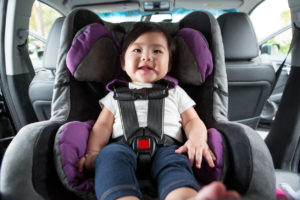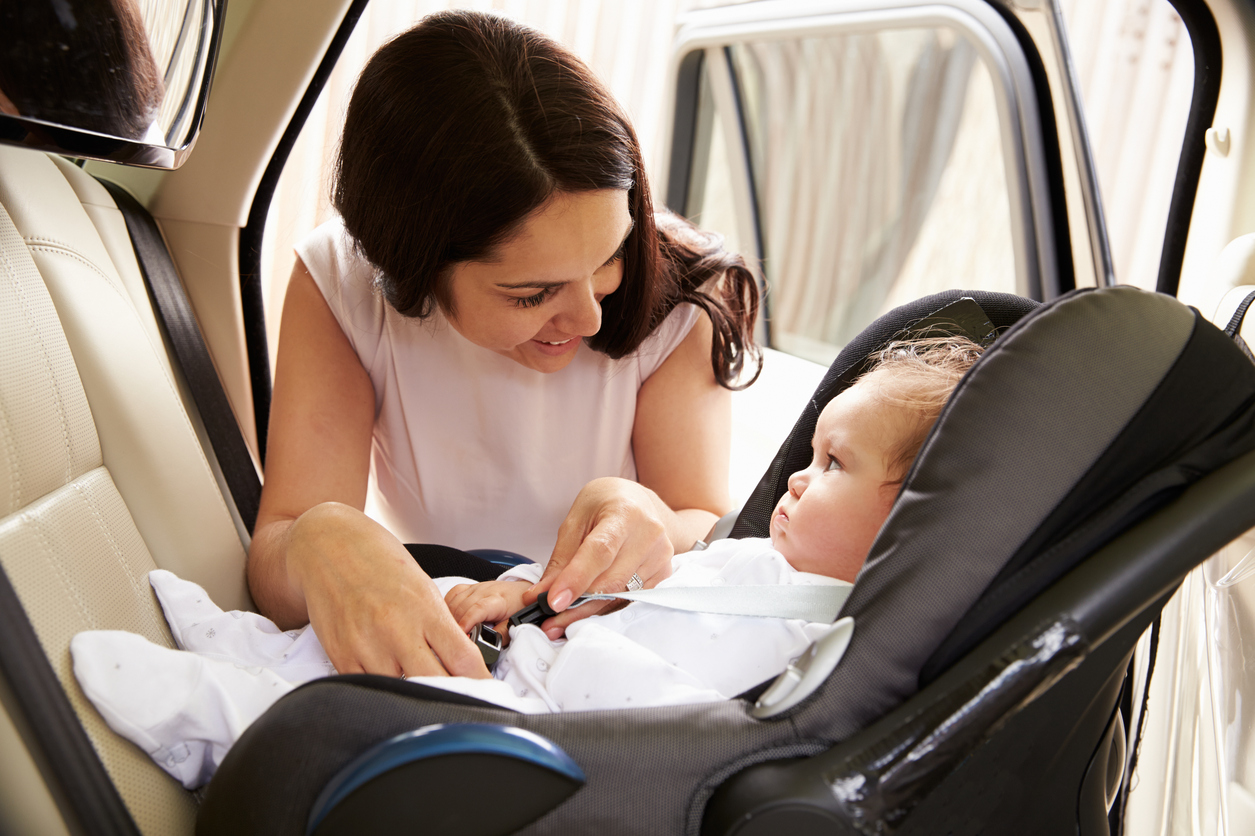It’s common knowledge that children are at a much higher risk than adults of sustaining injuries in the event of an accident. Although most parents are aware of this fact, many do not use car seats that complement their children’s weight, height and age.

Baby sitting in car seat, ready to go for a ride!
Last year, the New York Times reported on research that showed 2,885 children were killed in motor-vehicle accidents between 2010 and 2014 across the United States, at an average of 11 children per week. Nearly half of these incidents involved kids who were either incorrectly restrained or entirely unrestrained at the time of the crash.
Your child’s safety is your top priority, but nobody can control the actions of other drivers. If you or your child was injured in a wreck, speak to an Albuquerque auto accident lawyer at The Law Office of Brian K. Branch, PC for advice on what to do next.
With a combined 32 years in legal practice, our personal injury attorneys have the experience and professionalism to help you through this tough time and fight for fair compensation. Call 505-207-4401 to schedule a free initial consultation today.
3 Factors to Consider When Choosing a Child Car Seat
According to research from the Centers for Disease Control and Prevention, using a safety seat correctly can reduce the risk of infant mortality by 71 percent, and reduce the risk of toddler mortality by up to 54 percent. However, that does not mean all car seats are created equal. When choosing one for your child, there are three crucial factors to consider:
- Age;
- Weight; and
- Seat quality.
Your child’s seat requirements will change as he or she grows up and becomes heavier and taller. It is not advised that you attempt to keep your child in one seat from birth until the day he or she is big enough to use a lap-and-shoulder belt. Children under the age of 2 should use a rear-facing seat, whereas a child between 2 and 4 and weighing up to 40 pounds should be secured in a forward-facing child safety seat.
Between the ages 4 and 8 and until kids reach the height 4 feet 9 inches, they should be fastened in a belt-positioning booster seat and always in the back seat; after that age and height, standard seat belts without a booster are okay.
To check that your child is big enough to wear a seat belt, ensure that the lap belt is on the upper thighs, not around the stomach, and that the shoulder belt is on the chest, not on the neck.
Then there’s the quality of the seat to consider. Make sure that your child’s seat has the following features:
- A safety label stating that it adheres to Federal Motor Vehicle Safety Standard 213;
- A five-point harness, which will offer better protection than a three-point harness; and
- Four or five stars on the National Highway Traffic Safety Administration ease of use rating system.
Using a child car seat is an essential safety measure that should never be taken for granted. But to ensure it helps guard your child against serious injuries or even death in a crash, you need to keep yours in good condition and ensure it is properly fastened before each and every trip.
If your child was hurt in an accident, get in touch with a personal injury attorney at The Law Office of Brian K. Branch, PC. Since our founding in 1997, the lawyers at our firm have been providing compassionate yet aggressive representation to clients throughout New Mexico. Call 505-207-4401 to arrange your free initial consultation.
The Law Office of Brian K. Branch, PC
715 Marquette Avenue NW
Albuquerque, NM 87102
505-207-4401




